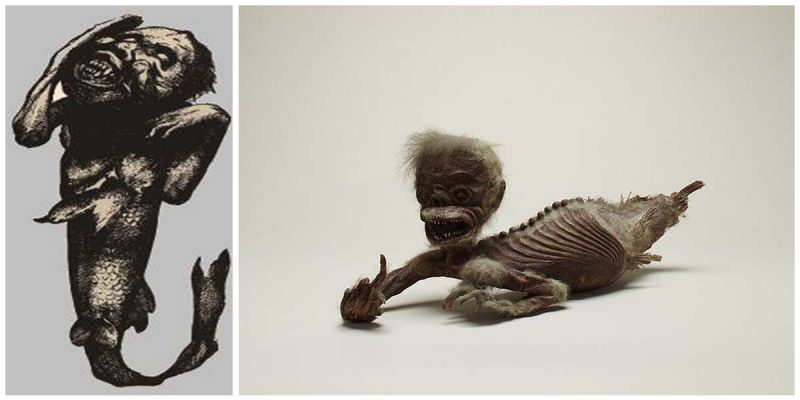The Fiji mermaid (also Feejee mermaid) was an object comprising the torso and head of a juvenile monkey sewn to the back half of a fish. It was a common feature of sideshows, where it was presented as the mummified body of a creature that was, supposedly, half mammal and half fish, a version of a mermaid. The original had fish scales with animal hair superimposed on its body with pendulous breasts on its chest. The mouth was wide open with its teeth bared. The right hand was set against the right cheek, and the left tucked under its lower left jaw.
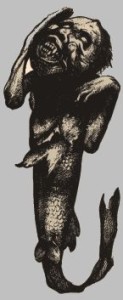
This mermaid was supposedly caught near the Fiji Islands in the South Pacific. Several replicas and variations have also been made and exhibited under similar names and pretexts. The original object was exhibited by P.T. Barnum in Barnum’s American Museum in New York in 1842 and then disappeared. It was assumed that it had been destroyed in one of Barnum’s many fires that destroyed his collections.
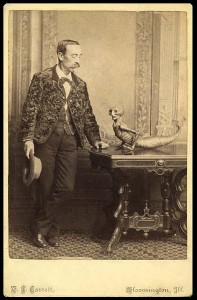
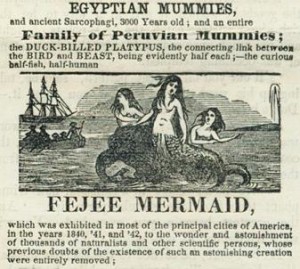
The legend of the mermaid has persisted for thousands of years. Travelers of the sea still keep their eyes open in hopes of catching this mythical creature. Actual mermaids had been presented at shows for centuries. The American sea captain Samuel Barrett Edes bought Barnum’s “mermaid” from Japanese sailors in 1822 for $6000 and it was displayed in London, the same year.
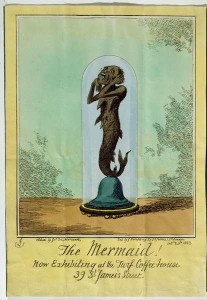
After Captain Edes’ death, his son took possession of the mermaid and sold it to Moses Kimball, of the Boston Museum,in 1842.
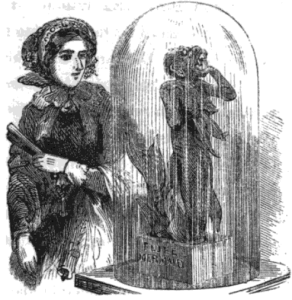
Before agreeing to exhibit the Fiji Mermaid, famed showman P.T. Barnum and purveyor of curiosities had a naturalist examine it. The naturalist, noting the teeth and fins of the “creature”, could not conceive how it would have been manufactured but, not believing in mermaids, would not attest to the artifact’s authenticity. Despite the naturalist’s doubts, Barnum believed that the relic would draw the public to the museum. Kimball would remain the creature’s sole owner while Barnum leased it for $12.50 a week.
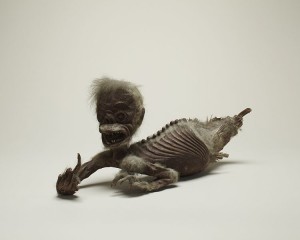
Having leased the mermaid, Barnum generated publicity by sending pseudonymous letters to New York newspapers from Alabama, South Carolina, and Washington D.C. The letters commented on the weather and alluded that there was a mermaid in the possession of “Dr. J. Griffin”, which he had allegedly caught while in South America. Griffin was actually Levi Lyman, one of P.T Barnum’s associates.
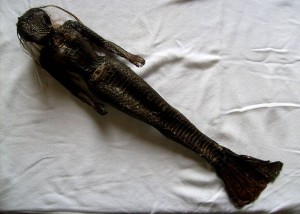
To keep the plan working, Griffin checked into a Philadelphia hotel. After staying a few days and gaining a positive reputation with the public, Griffin showed the landlord of the hotel the mermaid as thank’s for his hospitality. The landlord was so intrigued, he begged that some of his friends, many of whom were editors, be shown the mermaid. This made the public interested in the Fiji Mermaid.
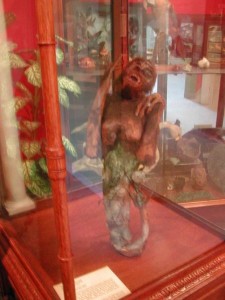
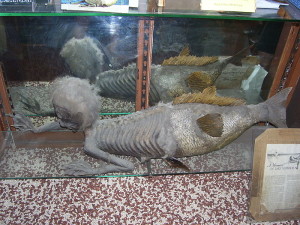
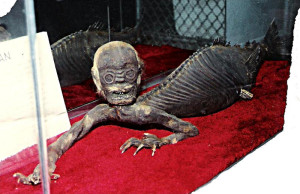
The FiJi Mermaid now seized had the public’s curiosity. Griffin traveled to New York and at first only displayed it only to a small audience and then displayed it at the Fiji Mermaid in Concert Hall for a week. It was actually only displayed for five days because Barnum had supposedly “convinced” Griffin to bring the mermaid to the American Museum of Natural History. While in the museum, Barnum had 10,000 illustrated pamphlets created that described mermaids and his specimen in particular.
